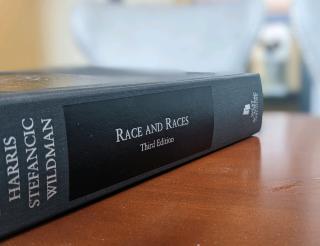Advertisement

A legal textbook used as a teaching resource for Critical Race Theory.
Many people wonder why “Critical Race Theory” (CRT) has incited so much ire in the conservative media and irrational fear among the public. It's essential to recognize that CRT is a sophisticated mode of legal analysis first developed in the 1970s, and most definitely was not designed for elementary and secondary school students.
CRT posits that race inflects all aspects of our society. As an often-invisible element of our legal, social, and intellectual structures, race is taken for granted and thus goes unacknowledged. To my eyes, when legal scholars in the 1970s coined the term Critical Race Theory, they inadvertently chose three words that were already inflammatory in the culture wars of that period and today are even more so.
Critical is misinterpreted to mean censorious instead of analytical or important. Given Americans’ sensitivity about our history of enslavement and discrimination, discussions about race engender contention and conflict. And theory, as understood by early-twentieth-century social scientists, challenges the universality of claims to truth.
Today, CRT is drawing boisterous opposition from detractors who twist this term to their political ends. This is not surprising, for CRT calls into question some heartfelt assumptions of most Americans, including legal determinacy and the disappearance of racial inequities in our society.
CRT opponents argue that it doesn’t give our society credit for making racial oppression disappear; indeed, it does not because racial oppression is still very much alive. Race is a discursive structure that forms over time and changes throughout history, but its strength and importance do not dissipate.
Opponents also object that CRT scholars advise that we attend to narratives and voices from the margins who traditionally are excluded from the narratives and storytelling that form the basis of legal cases and case law.
It’s unfortunate that those in disagreement with the tenets of Critical Race Theory have chosen to misrepresent the arguments of and the audience for this school of legal thought instead of engaging directly with the premises, facts, and logic of its concepts.